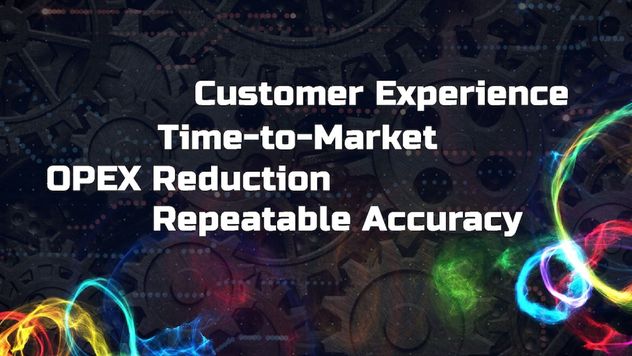
Customer experience transformation is a multifaceted process that relies on various factors, but perhaps the biggest areas of transformation that will enable any large enterprise in today’s dynamic market are:
- Channel optimization,
- Systems/technology enhancement, and
- Customer journey transformation.
By focusing on these key areas, businesses can create a holistic approach to improving customer experiences.
In this comprehensive deep-dive article, we will delve into each of these elements, providing insightful details and practical strategies to help organizations drive meaningful changes in their customer experience initiatives.
But before anything else, if you haven’t yet and need a refresher on it, be sure to check out the first article of this two-part series: Mastering CX Excellence Part 1: The Strategic Significance of Customer Experience For Large Enterprises
By understanding the importance of channel optimization, leveraging advanced systems and technology, and reimagining the customer journey, companies can unlock new opportunities for growth and establish a competitive edge in the market.
Keep reading as we explore these crucial aspects and uncover the secrets to delivering exceptional customer experiences.
A. Channel Transformation: Enhancing Customer Touchpoints
1. Call Center
Smart Agent Scheduling
Effective agent scheduling ensures the right agents with the appropriate skills are available to handle customer inquiries. By leveraging data analytics and forecasting algorithms, organizations can optimize agent schedules, minimize wait times, and improve customer satisfaction.
Smart Agent Routing
Smart agent routing utilizes intelligent algorithms to route customer queries to the most suitable agent based on factors such as language proficiency, expertise, and customer history. This ensures customers are connected to the right resource, leading to faster resolutions and improved customer experience.
Priority Calling
Implementing priority calling mechanisms allows organizations to prioritize urgent or high-value customer calls. By assigning appropriate priority levels, critical issues can be addressed promptly, resulting in improved customer satisfaction and loyalty.
First Touch Resolution
First touch resolution focuses on resolving customer issues during the initial interaction, eliminating the need for follow-up contacts. By empowering agents with comprehensive knowledge bases, streamlined processes, and decision support tools, organizations can enhance their ability to resolve issues promptly, minimizing customer effort and improving satisfaction.
Call Center Outsourcing
Outsourcing call center operations can be a strategic decision to enhance scalability, cost-efficiency, and expertise. Organizations can partner with specialized service providers to ensure round-the-clock availability, multilingual support, and access to advanced technologies.
AHT Insights & Optimization
Average Handling Time (AHT) insights and optimization involve analyzing and streamlining call center processes to reduce call duration while maintaining service quality. By leveraging analytics, organizations can identify bottlenecks, automate repetitive tasks, and enhance agent productivity, leading to shorter call durations and improved efficiency.
Agent Empowerment
Empowering agents with the right tools and resources is crucial for delivering exceptional customer experiences. Key components of agent empowerment include agent effort scoring.
Agent Effort Scoring
Agent effort scoring measures the effort required by agents to resolve customer issues. By assessing the complexity of tasks and providing relevant tools and training, organizations can reduce agent effort and improve their ability to deliver efficient and effective solutions.
AI Fraud Detection & Prevention
Integrating AI-powered fraud detection systems within call centers helps identify and prevent fraudulent activities, protecting both customers and the organization. Advanced algorithms analyze patterns, detect anomalies, and provide real-time alerts to agents, enhancing security and trust.
2. Self-care
Web & App
Offering intuitive web and mobile applications enables customers to access self-service options, manage their accounts, and resolve basic queries independently. User-friendly interfaces, personalized content, and seamless integration with backend systems contribute to an enhanced self-service experience.
Digital IVR
Digital Interactive Voice Response (IVR) systems leverage natural language processing and speech recognition technologies to enable customers to interact with automated systems in a conversational manner. This streamlines self-service processes and reduces customer effort.
Centralized Real Time Complaint Management System
A centralized complaint management system consolidates customer complaints and requests, providing a unified view for agents and enabling effective tracking, resolution, and analysis of customer issues. This helps organizations identify recurring problems and implement targeted improvements.
Digital Kiosks & Vending
Digital kiosks and vending machines provide convenient self-service options in physical locations, such as retail stores or service centers. Customers can perform tasks like bill payments, SIM card issuance, and device troubleshooting independently, reducing queues and enhancing the overall in-store experience:
Financial Self-Serve
Financial self-serve options enable customers to manage their account balances, make payments, and view transaction histories through self-service channels. This empowers customers with greater control over their financial interactions, reducing reliance on manual assistance.
GSM Self-Serve
GSM self-serve capabilities allow customers to perform SIM card-related tasks, such as activation, deactivation, and plan changes, through self-service channels. This reduces the need for customer care interventions and enhances convenience.
SIM Issuance and Replacement
Streamlining the process of SIM card issuance and replacement through self-service kiosks or vending machines reduces wait times and improves the overall customer experience.
3. Walk-In
Physical Experience Management
Physical experience management focuses on optimizing the in-store experience for customers. It includes factors such as store layout, signage, staff training, and wait-time management, ensuring a pleasant and efficient in-person interaction.
Self-Serve Experience
Providing self-service options in physical stores, such as self-checkout counters or information kiosks, allows customers to independently access information and perform transactions, reducing reliance on staff and enhancing convenience.
4. IVR
Voice Biometrics
Voice biometrics enable secure customer authentication by analyzing unique voice patterns. This eliminates the need for customers to remember passwords or answer security questions, streamlining the IVR authentication process and enhancing security.
Speech Recognition – Speech to Text
Speech recognition technology converts customer speech into text, enabling automated transcription and analysis of IVR interactions. This helps organizations identify customer sentiments, extract valuable insights, and identify areas for improvement.
Personalized IVR
Personalized IVR experiences leverage customer data and preferences to tailor IVR menus and prompts according to individual needs. This minimizes customer effort, speeds up call routing, and improves overall satisfaction.
5. Social Media
Social Media Listening
Social media listening involves monitoring social media channels to understand customer sentiment, identify emerging trends, and promptly respond to customer queries or concerns. This real-time feedback enables organizations to proactively address customer issues and engage in meaningful conversations.
Smart Lead Generation
Social media platforms provide opportunities for lead generation through targeted advertising, content marketing, and social engagement. By leveraging data analytics and machine learning algorithms, organizations can identify and engage with potential customers, driving business growth.
Sentiment Analysis
Sentiment analysis analyzes social media posts and comments to determine the sentiment associated with a brand, product, or service. This helps organizations gauge customer perceptions, identify areas for improvement, and develop effective strategies to enhance the overall customer experience.
Social Media Automation
Automation tools facilitate efficient management of social media interactions, including content scheduling, response automation, and sentiment tracking. These tools enable organizations to scale their social media presence and deliver timely and consistent customer engagement.
6. Smart Bot
Virtual Assistance
Virtual assistants, powered by artificial intelligence and natural language processing, provide automated support to customers across multiple channels. They can handle routine queries, provide personalized recommendations, and guide customers through self-service processes, improving efficiency and convenience.
AI-Powered Contextual Chat
Contextual chatbots use AI algorithms to understand customer intent, provide relevant responses, and engage in natural, context-aware conversations. This creates a more interactive and personalized customer experience, mimicking human-like interactions.
Social OTT Centralization
Social OTT (Over-The-Top) centralization integrates various messaging platforms, such as WhatsApp or Facebook Messenger, into a unified customer communication platform. This streamlines customer interactions, allowing agents to respond to messages from multiple platforms in a centralized manner.
B. Systems Transformation: Enhancing Operational Efficiency
1. Centralized Product Catalog
A centralized product catalog consolidates product and service information, enabling consistent and accurate offerings across multiple channels. This simplifies product management, reduces errors, and ensures a seamless customer experience.
2. Service Order Management
Service order management systems streamline the end-to-end process of fulfilling customer requests, from order placement to delivery and activation. This improves order accuracy, reduces processing times, and enhances the overall service experience.
3. Connect Knowledge Management System
A connect knowledge management system provides a centralized repository of product information, troubleshooting guides, and FAQs. This equips customer care agents with accurate and up-to-date knowledge, enabling efficient issue resolution and ensuring consistent customer support.
4. Zero Touch Operations
100% Auto Help Request Processing – Zero Touch Help
Zero touch help aims to automate the handling of customer requests without requiring manual intervention. Through intelligent automation, organizations can enable self-healing systems, self-service options, and AI-powered resolutions, minimizing the need for human involvement.
RPA
Robotic Process Automation (RPA) automates repetitive and rule-based tasks by utilizing software robots. By deploying RPA in backend processes, organizations can enhance operational efficiency, reduce errors, and accelerate response times.
Smart Service Updates
Smart service updates leverage machine learning and predictive analytics to proactively identify potential service disruptions or outages. This allows organizations to provide timely notifications to customers, manage expectations, and minimize the impact on the customer experience.
5. Integrations
Network
Integrating customer experience transformation initiatives with the network infrastructure enables proactive monitoring, self-healing capabilities, and personalized service delivery. This ensures a seamless experience for customers and reduces the likelihood of service disruptions.
BSS – CRM, Charging Billing, Product Catalog, Order Management
Integration of these systems enables end-to-end visibility and process automation. This integration facilitates accurate billing, personalized offers, and seamless order fulfillment while enabling one-window view for the customer agents as well.
6. Agent Program
Agent Training
Comprehensive agent training programs equip customer care agents with the necessary skills, product knowledge, and communication techniques to deliver exceptional customer experiences. Continuous training and upskilling ensure agents stay updated with evolving customer expectations.
Agent Screening & Recruitment
Implementing robust screening and recruitment processes helps identify candidates with the right aptitude and customer-centric mindset. By selecting agents who align with the organization’s values and objectives, organizations can build a customer-centric workforce.
Agent Target Setting and Measurement
Setting clear performance targets and measuring key metrics, such as average handling time, first contact resolution, and customer satisfaction, ensures accountability and enables continuous improvement. Regular performance evaluations and feedback sessions further drive agent excellence.
Smart Real-Time Notifications
Real-time notifications provide agents with contextual information, updates, and relevant customer insights during interactions. This empowers agents to deliver personalized and informed responses, enhancing the overall customer experience.
7. Crowdsourcing Platform
Testing
Crowdsourcing testing initiatives involve leveraging a pool of external testers to validate new features, identify bugs, and provide feedback on the customer experience. This accelerates the testing process and ensures a robust and error-free product launch.
Content Generation
Crowdsourcing content generation allows customers to contribute reviews, ratings, and user-generated content, such as tutorials or troubleshooting guides. This fosters a sense of community, provides authentic information, and enhances the overall customer experience.
Innovation & Ideas
Crowdsourcing innovation and ideas involve gathering suggestions and feedback from customers to drive product and service improvements. By involving customers in the innovation process, organizations can align their offerings with customer needs and preferences.
Customer 2 Customer (C2C) Servicing
Customer 2 Customer (C2C) servicing leverages the power of the customer community to provide support and assistance to fellow customers. This peer-to-peer support network allows customers to share their knowledge, experiences, and solutions, fostering a sense of collaboration and empowering customers to help each other.
8. Customer Profiling System
Upsell Analytics
A customer profiling system utilizes data analytics to identify opportunities for upselling and cross-selling. By analyzing customer behavior, preferences, and purchase history, organizations can personalize offers and recommendations, increasing revenue and customer satisfaction.
Churn Prediction and Management
Churn prediction models use historical data and predictive analytics to identify customers at risk of churn. By proactively targeting these customers with retention strategies, organizations can reduce churn rates and preserve valuable customer relationships.
Next Best Offer
Next best offer algorithms analyze customer data and preferences to determine the most relevant and personalized offers for each customer. This enables organizations to deliver targeted promotions and recommendations, increasing customer engagement and loyalty.
Loyalty Engine
A loyalty engine consolidates customer loyalty programs, rewards, and incentives into a unified platform. By implementing gamification elements, personalized offers, and tiered reward structures, organizations can foster customer loyalty and advocacy.
9. One View/One Window
Agent Virtual Assistant
An agent virtual assistant provides real-time insights, recommendations, and suggested actions to support customer care agents during interactions. By leveraging AI and machine learning, agents can access relevant information and resources efficiently, improving their productivity and effectiveness.
UI Design Revamp for Agent
Revamping the user interface (UI) design for agent-facing systems ensures a seamless and intuitive experience for customer care agents. User-centric design principles, streamlined workflows, and easy access to information empower agents to deliver efficient and personalized customer support.
KMS Driven Information Architecture
A knowledge management system (KMS) driven information architecture organizes and structures information in a way that facilitates easy access and retrieval for both customers and agents. This ensures consistency, accuracy, and quick resolution of customer queries and issues.
C. Customer Journey Transformation: Fostering End-to-End Experiences
1. Governance
Voice of Customer Forum
A voice of customer forum serves as a platform for capturing customer feedback, suggestions, and insights. By actively listening to customer voices, organizations can identify pain points, prioritize improvements, and align their strategies with customer expectations.
2. Omni-Channel Experience Enablement
Omni-channel experience enablement focuses on providing consistent and seamless experiences across all customer touchpoints, whether digital or physical. By integrating channels and data, organizations can deliver personalized and contextually relevant interactions throughout the customer journey.
3. Digital Channels Journey Revamp
Revamping digital channels involves optimizing websites, mobile apps, and other digital touchpoints to enhance usability, navigation, and overall user experience. This ensures a frictionless and engaging digital journey for customers.
4. Physical Channels Journey Revamp
Revamping physical channels, such as retail stores or service centers, involves reimagining the customer journey, enhancing in-store experiences, and providing seamless transitions between digital and physical touchpoints. This creates a unified and consistent customer experience.
5. Channel Servicing Analytics & Insights
Channel servicing analytics and insights involve leveraging data and analytics to understand customer behavior, preferences, and interactions across various channels. This enables organizations to optimize channel performance, personalize experiences, and drive customer satisfaction.
6. Customer Research
Customer Integration Lab
A customer integration lab serves as a dedicated space to test and validate customer experience initiatives, prototypes, and new features. By involving customers in the design and development process, organizations can ensure that their offerings meet customer needs and expectations.
Customer Integration Process
The customer integration process involves engaging customers in co-creation sessions, surveys, interviews, and feedback loops. This collaborative approach helps organizations gain valuable insights, validate ideas, and build customer-centric solutions.
Customer Recruitment
Strategic customer recruitment ensures the inclusion of diverse customer segments and personas in research and testing activities. By representing the customer base accurately, organizations can gain comprehensive insights and design experiences that cater to different customer needs.
Organization Design Thinking Mindset
Adopting a design thinking mindset across the organization fosters a culture of innovation, empathy, and customer-centricity. This involves encouraging cross-functional collaboration, embracing iterative problem-solving, and valuing customer feedback throughout the organization.
7. Auto CSAT, NPS Process & Insights
Automating the customer satisfaction (CSAT) and Net Promoter Score (NPS) processes enables organizations to collect feedback, measure customer sentiment, and identify areas for improvement in real-time. By analyzing CSAT and NPS data, organizations can gain actionable insights and prioritize initiatives that enhance the customer experience.
By focusing on these various dimensions of customer experience transformation, large enterprises can cultivate a customer-centric organizational culture, optimize operational efficiency, and deliver exceptional experiences at every touchpoint. Embracing these strategies and technologies will not only result in short-term benefits, such as improved customer satisfaction and increased revenues but also position organizations for long-term success by aligning with the evolving needs and expectations of their customers.
8. Customer Journey Analytics
Customer journey analytics involves the systematic collection, analysis, and interpretation of data related to customer interactions and experiences across various touchpoints. By leveraging advanced analytics techniques, organizations can gain deep insights into customer behavior, preferences, pain points, and moments of truth throughout the customer journey.
9. Journey Mapping
Journey mapping involves visually representing the end-to-end customer journey, capturing customer touchpoints, emotions, and key interactions. By mapping out the customer journey, organizations can identify opportunities for improvement, uncover pain points, and design targeted interventions to enhance the overall experience.
Behavior Analysis
Behavior analysis focuses on understanding customer actions, such as website browsing patterns, app usage, purchase history, and interactions with customer support. By analyzing customer behavior, organizations can identify patterns, segment customers, and personalize experiences based on individual preferences.
Predictive Analytics
Predictive analytics utilizes historical data and machine learning algorithms to forecast future customer behavior and preferences. By predicting customer needs and anticipating their actions, organizations can proactively deliver personalized experiences and tailor their offerings to meet customer expectations.
Sentiment Analysis
Sentiment analysis involves analyzing customer feedback, social media mentions, and online reviews to gauge customer sentiment and perception. By monitoring sentiment, organizations can identify areas of dissatisfaction, address negative sentiment promptly, and amplify positive experiences.
Real-time Journey Orchestration
Real-time journey orchestration combines data analytics, automation, and decision-making capabilities to deliver personalized experiences in real-time. By dynamically adjusting interactions based on customer context and preferences, organizations can create seamless, relevant, and engaging journeys for customers.
10. Voice of Customer Analytics
Voice of customer analytics involves analyzing unstructured customer feedback, such as survey responses, call transcripts, and chat logs, to extract actionable insights. By understanding the voice of the customer, organizations can identify emerging trends, uncover hidden issues, and make data-driven decisions to improve the customer experience.
By harnessing the power of customer journey analytics, organizations can gain a holistic understanding of the customer experience, identify areas of improvement, and take proactive steps to deliver personalized and seamless journeys. This data-driven approach enables organizations to continuously optimize the customer experience and stay ahead of evolving customer expectations.
Final Takeaway
Customer experience is a pivotal business driver that organizations must prioritize.
Particularly so in today’s competitive landscape, achieving excellence in customer experience is paramount.
This comprehensive article has laid a roadmap for you to prioritize your channel, systems, and customer journey transformation to drive CX excellence and master it.
By embracing strategies like smart agent routing, AI-powered chatbots, omni-channel experiences, and predictive analytics, businesses can not only enhance immediate customer satisfaction but also foster long-term loyalty.
As the digital landscape evolves, it’s imperative for organizations to proactively adapt and align with their customers’ changing needs. By implementing these strategies, businesses can position themselves at the forefront of customer-centric innovation, ensuring sustainable growth and success.



